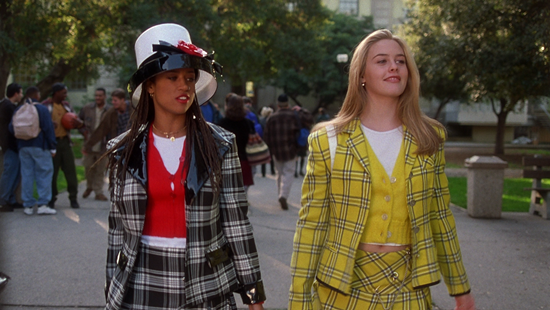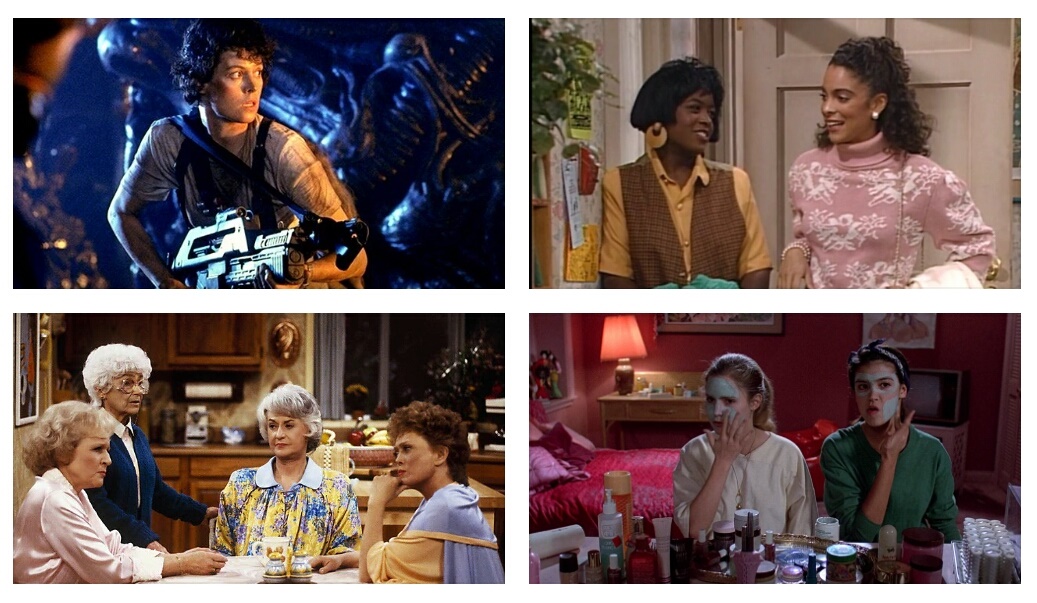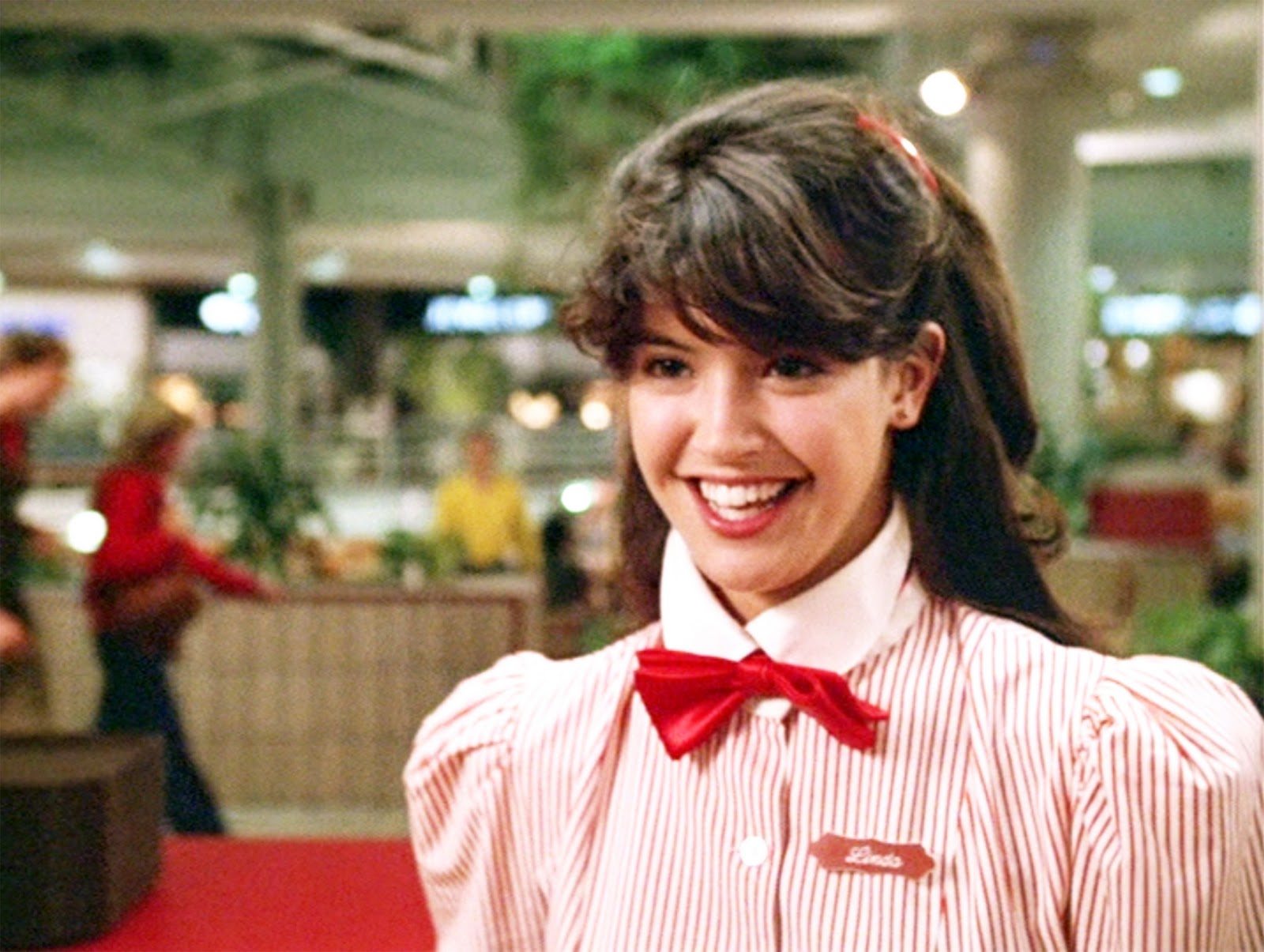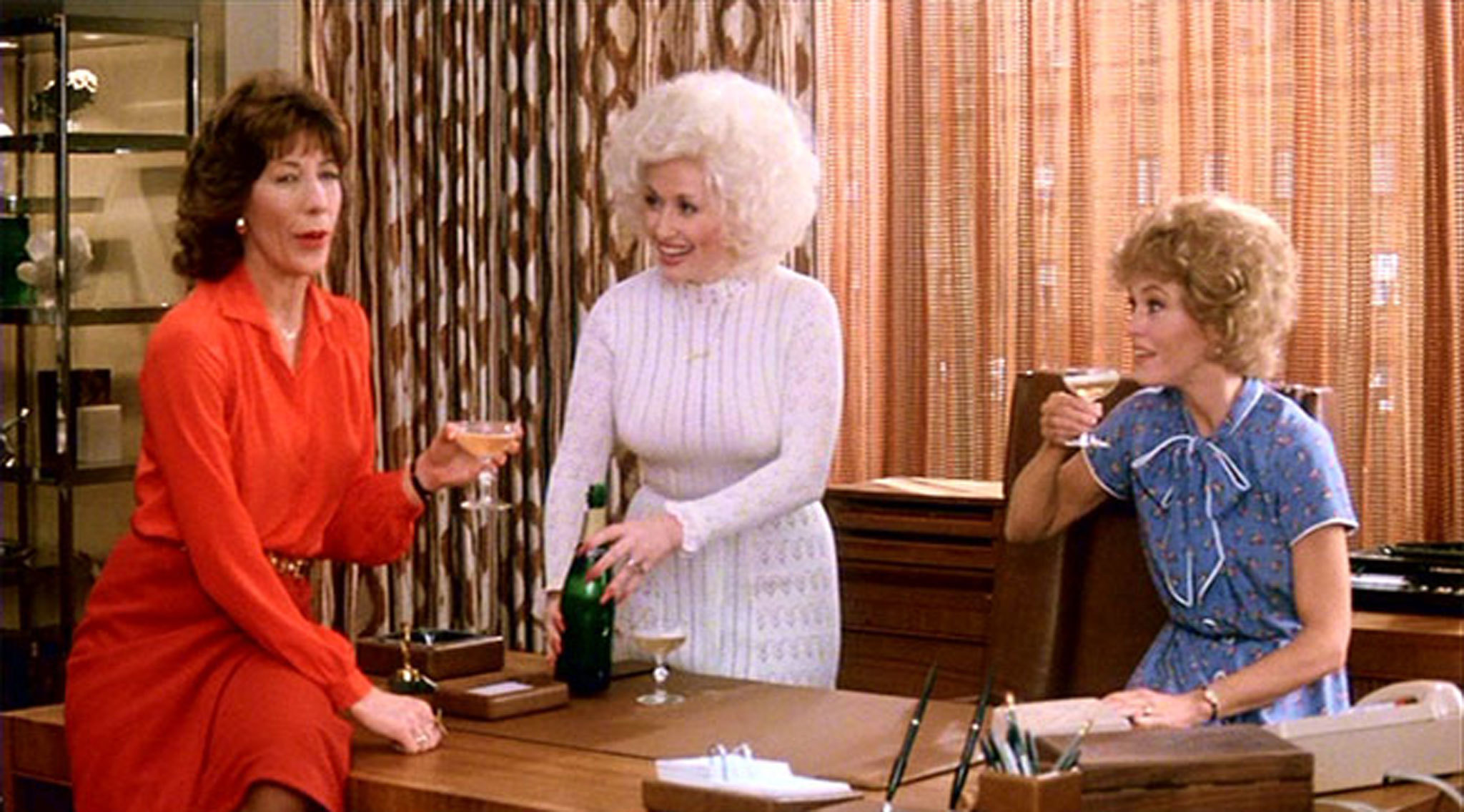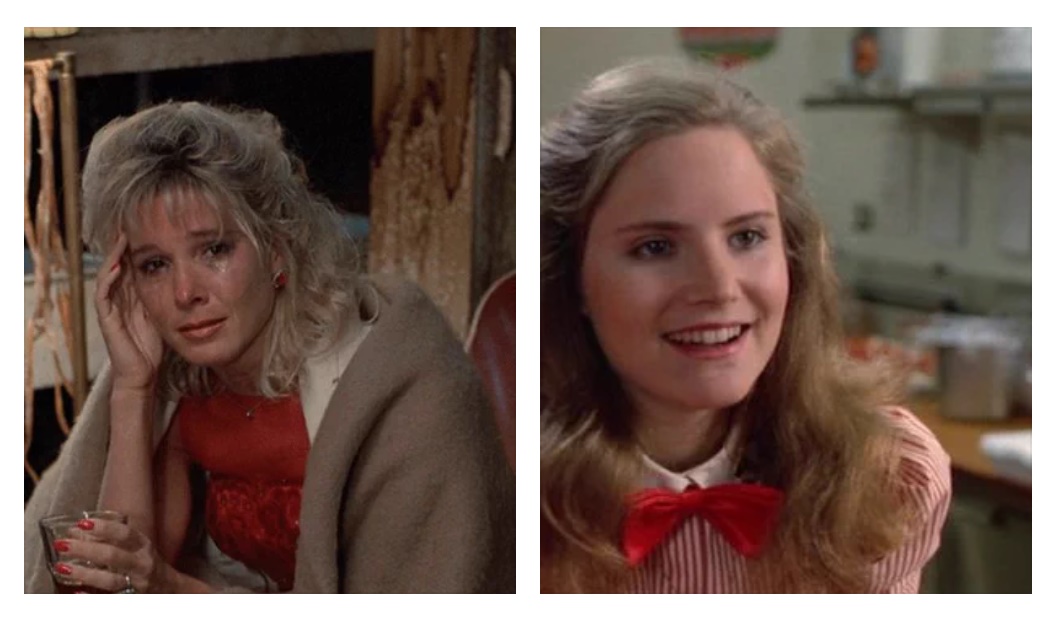This guest post written by Tim Covell appears as part of our theme week on Women Directors, Part 2.
Amy Heckerling is the director of the hit films Fast Times at Ridgemont High (1982), Look Who’s Talking (1989), and Clueless (1995). One of the most financially successful women directors, her films have made more money than the films of acclaimed male directors like Spike Lee and John Hughes, [1] but despite financial and critical acclaim, she has received minimal recognition. Her more recent efforts, such as Vamps (2012), have been independent films. It’s easy to accept that Heckerling’s lack of recognition is typical of the treatment of women directors, and her challenges have included obstacles unknown to many male directors, such as taking time off for children and caring for elderly parents. However, her work in less prestigious mid-budget comedies and teen films, and therefore with new and lesser known actors, has often been by choice. Her great accomplishments as a feminist director come not from breaking into the prestigious and male-dominated genres, but in how she has presented female characters and female sexuality in her films.
A native New Yorker, Heckerling loved old movies as a child, especially gangster films, musicals, and comedies. She watched them on TV, and by the age of fourteen, she watched classic movies on weekends at the Museum of Modern Art (Jarecki). When a classmate declared his career goal to become a director, Heckerling realized that could be a career goal for her too, and that she was better suited to the job than he was (Jarecki).
She pursued her dream by attending New York University Film School, where she was the only student in her class making musicals (Jarecki 144). She attempted to combine 1930s comedy with mid-1970s politics, resulting in films that she describes as weird, but good enough to get her into the American Film Institute (AFI), in Los Angeles. For a New Yorker, who did not know how to drive a car, the move meant significant culture shock, but AFI treated filmmaking as a business to a much greater extent than film school, and made breaking into the industry easier. According to Heckerling, the goal of the AFI program was to produce a serious short film that would prove ability to direct serious, mature content. She rejected that approach in favor of fun films for a younger audience, and made Getting It Over With, a comic short about a woman wanting to lose her virginity before midnight on her twentieth birthday.
Heckerling graduated and ran out of money before finishing the film, and worked as an assistant editor to make enough in order to complete it (Jarecki 145-6). Next, she needed an agent, but none attended her otherwise successful screening (Jarecki 145-6). Of this and other career events, Heckerling expresses mixed feelings about Hollywood. On the one hand, she has praised the marketing ability and power of the studios: “You know, I liked that machine. It worked.” On the other hand, she called the lack of agents at her screening “Hollywood Bullshit” (Jarecki 146). In these pre-video days, she could only afford one print of the film to show potential agents, so finding an agent was a slow process. One night, while driving home from a Mean Streets / Clockwork Orange double feature, she was hit by a drunk driver and seriously injured. She lost her assistant editing job. In a scene fit for a Hollywood movie, she was worrying in her apartment, broke and carless, when the president of Universal Pictures called and asked her to make a feature film for the studio (Jarecki 147).
Heckerling wanted to write and make a film she called a female version of Carnal Knowledge (1971), which traces the hetero relationships of two male friends, from the late 1940s through 1970. A studio executive rejected the idea of a film centered on a pair of female characters, noting that women would not be friends the way the men were (Jarecki 148-9). Heckerling reviewed scripts on hand at Universal, and eventually read a script for Fast Times at Ridgemont High. She loved it, but after reading the original book, she wanted to add some of the depth of the book to the movie adaptation (Jarecki 149). By taking active roles in writing, editing, and scoring, Heckerling established herself as an auteur director with her first film. As observed by lecturer Lesley Speed, “the most memorable” moments in Fast Times at Ridgemont High (and Clueless) are those that were not present in the source material, but added by Heckerling. Speed, Kerri VanderHoff, and other scholars have compared Fast Times at Ridgemont High to similar films, analyzed scenes such as Stacy’s first sexual experiences and Brad’s masturbation fantasy on a shot-by-shot basis, and concluded that Heckerling made great strides incorporating female perspectives into a genre dominated by male perspectives.
Heckerling’s music preferences brought her info conflict with the studio, and with this and other films, she also faced challenges with what she considered unfair treatment by censors. The editing of Fast Times at Ridgemont High was complicated by fights with her first husband; she removed the phone from the editing room, which led to him dropping by to yell at her (Jarecki).
The studio was unsure how to market the film and initially gave it a limited release. A wider release followed but with no significant marketing. Film critic Pauline Kael gave it a positive review, noting, for example, “the friendship of the two girls . . . has a lovely matter-of-factness” (Kael). Critic Roger Ebert, however, completely missed the film’s light approach to frank realism, calling it sexist and wondering “whatever happened to upbeat sex?” (Ebert). Heckerling enjoyed a brief period of what she called being a “flavor-of-the-month” director (Jarecki 153), but was pigeon-holed as a director of films about girls losing their virginity. Fast Times at Ridgemont High was briefly made into a TV series, with Heckerling writing, producing, and directing.
Her next film was Johnny Dangerously (1984), a comic spoof of gangster films. Heckerling told Slant Magazine that she chose the project because she “wanted to do something not female” and “one of the genres I’ve always loved was gangster movies.” It did not perform well in test screenings (or on release), and she jumped into the mainstream with National Lampoon’s European Vacation (1985) to stave off career failure. She didn’t enjoy the work, but it was a solid commercial hit. In an interview with A.V. Club, Heckerling said, “And then I had a kid, and that was a priority.”
A few years later, Heckerling wrote and directed Look Who’s Talking (1989), and at the time claimed her new role as a mother was the inspiration. She was involved to varying degrees with the two sequels and TV series that followed, although the sequel was requested by the studio in exchange for defending Heckerling in a plagiarism lawsuit. For Look Who’s Talking, she worked with an established actor, John Travolta, but his career was then in a slump. Just as Heckerling’s teen films were a springboard for many young actors, the high-grossing Look Who’s Talking and its sequels in 1990 and 1993 revived Travolta’s career, though later his comeback was credited to his appearance in Pulp Fiction (1994). [2]
Heckerling returned to teen comedies with Clueless (1995), based on Jane Austen’s novel Emma. It was completed under budget (a modest $12-$13 million) and just six days behind its 47-day schedule (Chaney 70). The film was a financial and critical success, and again, Heckerling received praise for her honest portrayals of female friendships and teen sexuality.
Again, the film advanced careers, particularly for actress Alicia Silverstone. A three-season TV series followed, with Heckerling doing most of the writing, and directing some episodes. A Broadway musical is currently in development. In addition to its cult following, Clueless‘ broader cultural impact included a revival of teen comedies, particularly updates of classic texts, and influences on fashion and slang.
Clueless is the only film that has led to awards for Heckerling. Her screenplay won the National Society of Film Critics Award, and placed second for the New York Film Critics Circle Awards. She was nominated for Best Screenplay for the Writers Guild of America awards. Nominations like these are typically followed by Academy Award nominations, but the Academy decided her screenplay was an adaptation, not an original work, which put it up against “serious” literary films. She also received the Franklin J. Schaffner award from AFI in 1998, and the Crystal Award from Women in Film in 1999.
Heckerling has noted that having success in Hollywood doesn’t mean making the next film is any easier. Another teen comedy, her film Loser (2000) was not a critical or financial success, and that hurt her career. In an interview, she told The Ringer, “‘A guy gets chances,” she says. But a female director? ‘It’s like, you fuck up [once] and that’s it, goodbye.'”
I Could Never Be Your Woman (2007) is a comic take on Heckerling’s experiences in the film industry, particularly making the TV series Clueless. The film features a divorced mother producing a fading teen comedy TV series, while dealing with her daughter and their mutual attraction to the show’s youthful new star. Heckerling had difficulty getting funding, in part because of the older female lead character, played by Michelle Pfeiffer. Financial problems caused many production delays and distribution rights were sold without Heckerling’s knowledge, resulting in a straight to DVD release and obscurity. At the time, she was preoccupied looking after her parents, as her father was ill and her mother had cancer.
Her next film, Vamps (2012), opened on just one screen before going to DVD, but judging by media coverage and online reviews, it is better known than I Could Never Be Your Woman. Although Bitch Flicks‘ review of Vamps, written by Stephanie Rogers, has a pull-quote on the DVD release. This film finally allowed her to work with a friendship between adult women, as she wanted to do for her first feature. In recent years, Heckerling has directed episodes of several TV series, including Red Oaks, a streaming series for Amazon. Red Oaks is familiar territory for Heckerling: a coming-of-age comedy set in the 1980s.
Heckerling is often asked about the challenges of being a woman director, and her responses show resignation. “You can get bitter and then you can get angry. And anger isn’t good for your work” (Chaney 262). When asked if she thinks of herself as a top female director, she notes in an interview with Charlie Rose that it’s just a job, and you find yourself wondering, ”How am I going to get up so early and live through this?” She also rejects the notion of herself as an artist, claiming it’s not applicable to her work, despite her creative output as a writer, director, editor, and producer, and the cult-like appreciation of Fast Times at Ridgemont High and Clueless. When advising newcomers to filmmaking, she largely ignores gender issues, and instead emphasizes the importance of getting your material out there, standing out, and networking in the industry.
When asked about the toxicity of “the beauty industry in Hollywood,” she reminds prospective directors that “Hollywood is the dream factory,” (and, for better or worse, you need to supply those dreams) but she doesn’t agree with how those dreams treat women, noting that “no one dreams about older women.” When asked about her thoughts on the lack of women-directed films in an interview with Women and Hollywood, Heckerling said:
“It’s a disgusting industry. I don’t know what else to say. Especially now. I can’t stomach most of the movies about women. I just saw a movie last night. I don’t want to say the name — but again with the fucking wedding and the only time women say anything is about men.”
But she’s also pragmatic. “I’m the world’s biggest Mean Streets fan, but because I did Look Who’s Talking I have this house and my daughters go to a good school” (Jarecki 155). And when asked in 2008, by a male interviewer, if she wished she had made more movies, her response has the sharp wittiness and realism so often seen in her films:
“There were missed opportunities, and there are things I wish I’d never gotten up to do. I can’t think about it, because I’m stuck inside of me. Nobody can tell the future, or how things would’ve happened. There’s no point to that. As far as, like, wishing I did a shitload more — I mean, do you wish you fucked more beautiful women? What are you gonna do?”
See also at Bitch Flicks:
Fast Times at Ridgemont High: The Confidence and Wisdom of Linda Barrett
Historical vs. Modern Abortion Narratives in Dirty Dancing and Fast Times at Ridgemont High
How Vamps Showcases the Importance of Women Friendships
Sources / Recommended Reading:
Chaney, Jen. As If! The Oral History of Clueless, As told by Amy Heckerling, The Cast, and the Crew. New York: Touchstone, 2015.
Ebert, Roger. “Clueless.” Roger Ebert’s Video Companion. Kansas City, Missouri: Andrews and McMeel: 1995.
Jarecki, Nicholas. Breaking In: How 20 Film Directors Got Their Start. New York: Broadway Books, 2001.
Kael, Pauline. “Clueless.” 5001 Nights At The Movies. New York: Henry Holt and Company, 1991.
Murray, Noel. “Amy Heckerling.” A. V. Club. March 20, 2008.
Nakhnikian, Elise. “Interview: Amy Heckerling on Career and Gender Politics.” Slant Magazine. May 14, 2016.
Nastasi, Alison. ““I Never Felt Embarrassed”: Amy Heckerling on Making Movies About Teens and the Future of ‘Clueless’.’’ Flavorwire. October 19, 2015.
Rose, Charlie. Amy Heckerling (video and interview transcript). November 13, 1996.
Silverstein, Melissa. “Interview with Vamps Director Amy Heckerling.” Indiewire. April 9, 2012.
Speed, Lesley. “A World Ruled by Hilarity: Gender and Low Comedy in the Films of Amy Heckerling.” Senses of Cinema. October 2002.
VanderHoff, Kerri. “Fast Times at Ridgemont High and Porky’s: Gender Perspective in the Teen Comedy.” McNair Scholars Journal 9, no. 1 (2005).
Zoladz, Lindsay. “True Confessions of a Female Director.” The Ringer. February 16, 2017.
[1] According to Box Office Mojo’s List of Directors by Gross Earnings (not adjusted for inflation), in April of 2017 Heckerling ranked 179, out of 866, behind Penny Marshall and Mel Brooks, but ahead of Spike Lee and John Hughes. Among top-grossing female directors, she is in the top ten.
[2] For example, compare these comments on Travolta. From a NY Times review of Look Who’s Talking: “Mr. Travolta . . . is especially winning in a role that barely exists. He’s still an accomplished comic actor.” From a later NY Times article: “[Travolta] established himself as a genuine movie star with Saturday Night Fever in 1977, but soon went into a long artistic tailspin that took him through all those talking-baby movies (the Look Who’s Talking series), only to return with Pulp Fiction, a stunning reminder that he could act.”
Tim Covell has degrees in English Literature, Film Studies, and Canadian Studies. He studies film censorship and classification systems, which are largely about managing representations of sexuality. More at www.covell.ca.
